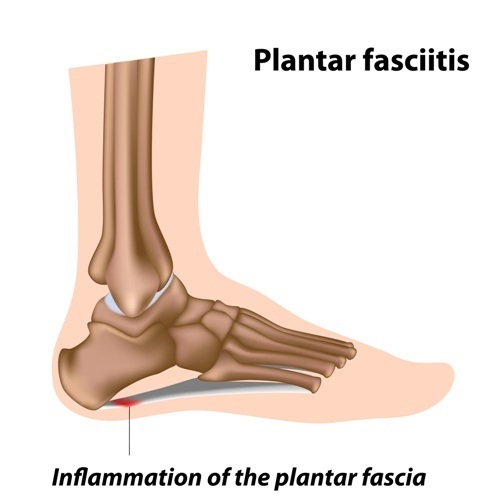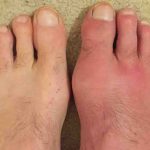Heel pain is normally caused by an inflammation of the tissue that connects the toes to the heel bone. The tissue becomes irritated then inflamed causing heel pain. The inflammation is referred to as plantar fasciitis or heel spur syndrome if a heel spur is present (a calcium deposit that causes a bony protrusion under the heel). Spurs are generally painless although they are known to cause heel pain in some cases.
Besides inflammation and spurs, heel pain may be caused by other factors such as nerve irritation, tendonitis, a stress fracture, arthritis or a cyst (in rare cases). Since many factors cause heel pain, it’s important to have a proper diagnosis done by a specialist. Foot and ankle orthopedic surgeons are the best-placed healthcare professionals for diagnosing plantar fasciitis, more so, distinguishing between the exact cause/source of heel pain.
Causes

Most causes of plantar fasciitis can be traced back to a faulty foot structure. People who have overly flat or highly-arched feet are prone to plantar fasciitis. If you have had a problem with your arches, your chances of suffering from heel pain are higher.
Other causes include wearing non-supportive footwear on hard flat ground. This exerts strain on your plantar fascia capable of causing heel pain. Plantar fascia caused by non-supportive footwear is common among people who work in jobs which involve a lot of standing. Other causes include obesity and straining the legs.
Tap read more to continue article
More from Things Health
-
Symptoms of Gout
Gout is a form of inflammatory arthritis characterized by recurrent attacks of a red, tender, hot, and swollen joint. Pain typically comes on rapidly in…
-
Symptoms Of Epilepsy
Epilepsy a neurological disorder marked by sudden recurrent episodes of sensory disturbance, loss of consciousness, or convulsions, associated with abnormal electrical activity in the brain.…
-
Symptoms Of Ovarian Cancer
Ovarian cancer is often referred to as a quiet disease as it usually isn't discovered until it is in the advanced phases. In nearly all…
-
Symptoms of Adult ADHD
It is not easy for a doctor to diagnose adult attention deficit hyperactivity disorder. An adult will understand the signals of ADHD in himself or…
-
Symptoms Of An Ulcer
A peptic ulcer is an open sore in the top digestion tract. Both primary kinds of peptic ulcers, a gastric ulcer, which forms in the…


















